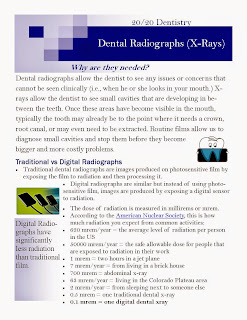 Good oral care is part of a healthy lifestyle. You can help prevent cavities and gum disease by routine daily teeth cleaning, good eating habits and regular dental visits.
Good oral care is part of a healthy lifestyle. You can help prevent cavities and gum disease by routine daily teeth cleaning, good eating habits and regular dental visits.
What causes tooth decay and gum disease?
Your teeth are covered with a sticky film of bacteria called plaque. These bacteria convert the sugar in the foods you eat into acids. This plaque, if left in contact with teeth, damages the teeth and the gums. The acid breaks down the enamel causing cavities, while the bacteria irritate the gums, making them swell and bleed.
Swollen and bleeding gums, also known as gingivitis, are the early signs of gum disease. This early stage is reversible by professional dental cleaning and good oral hygiene at home. If left untreated, the gums pull away from the teeth creating pockets which are harder to clean and get infected. Bacteria in the pockets enter the bone surrounding the teeth and destroy it, making teeth become loose and fall out.



















